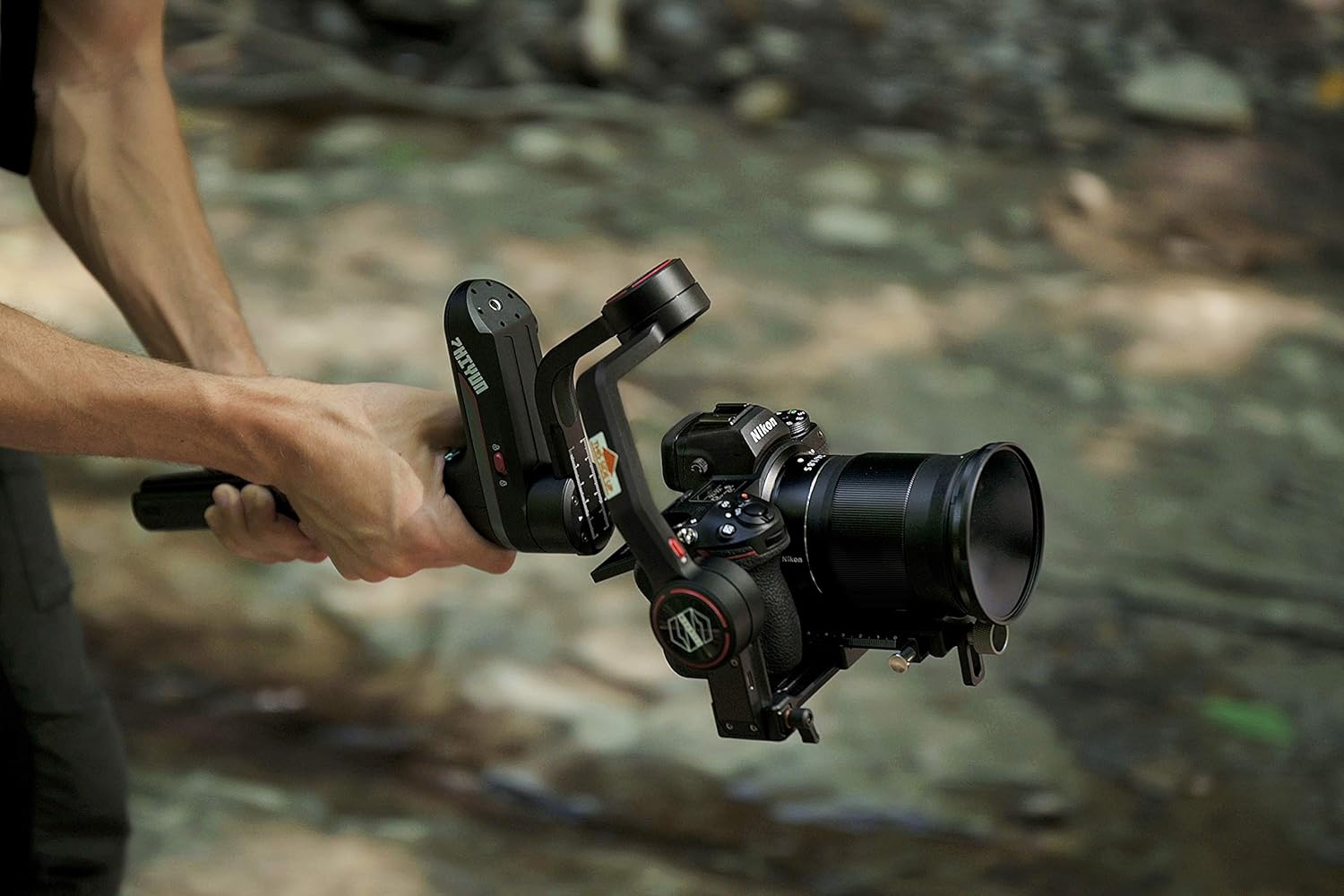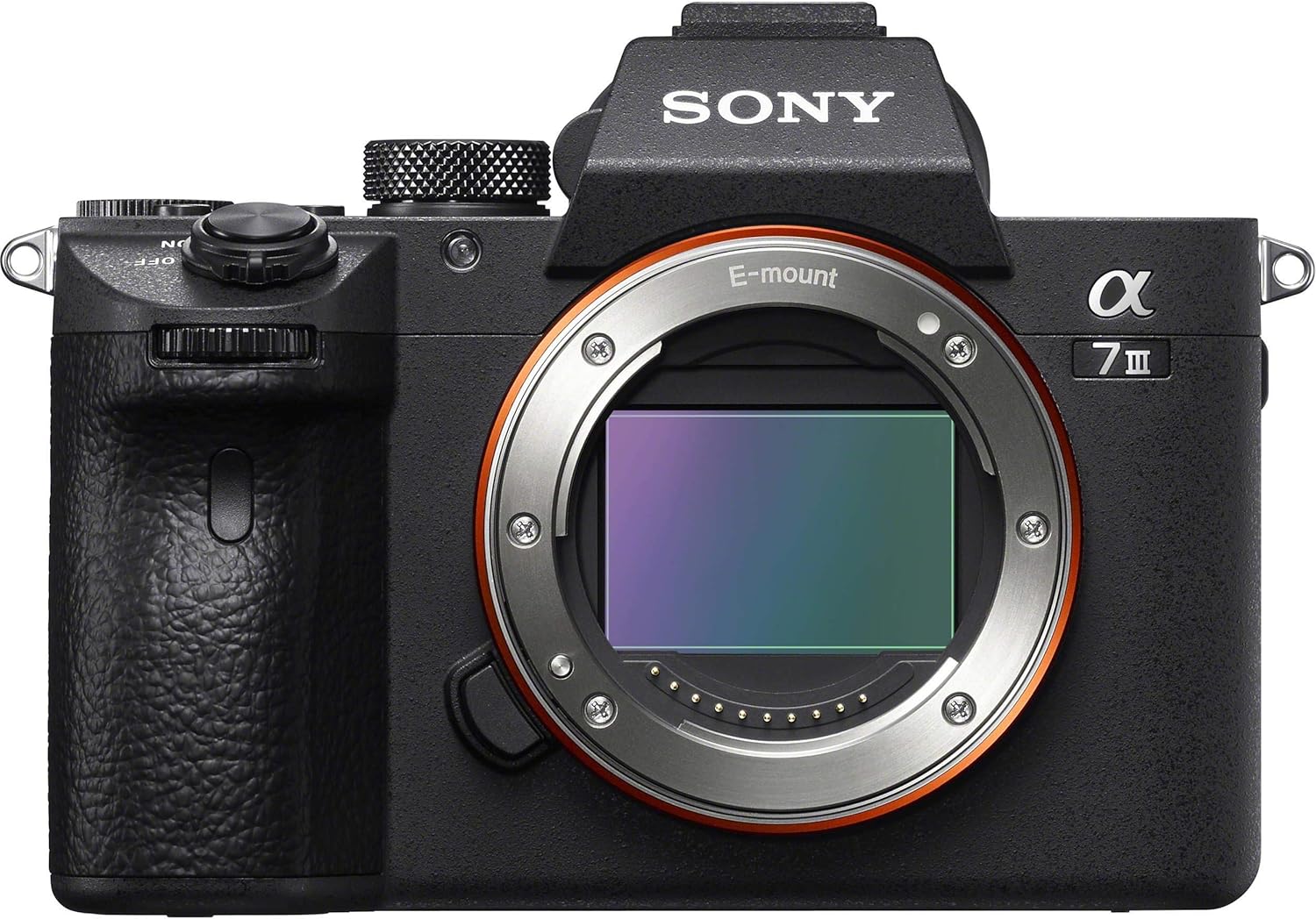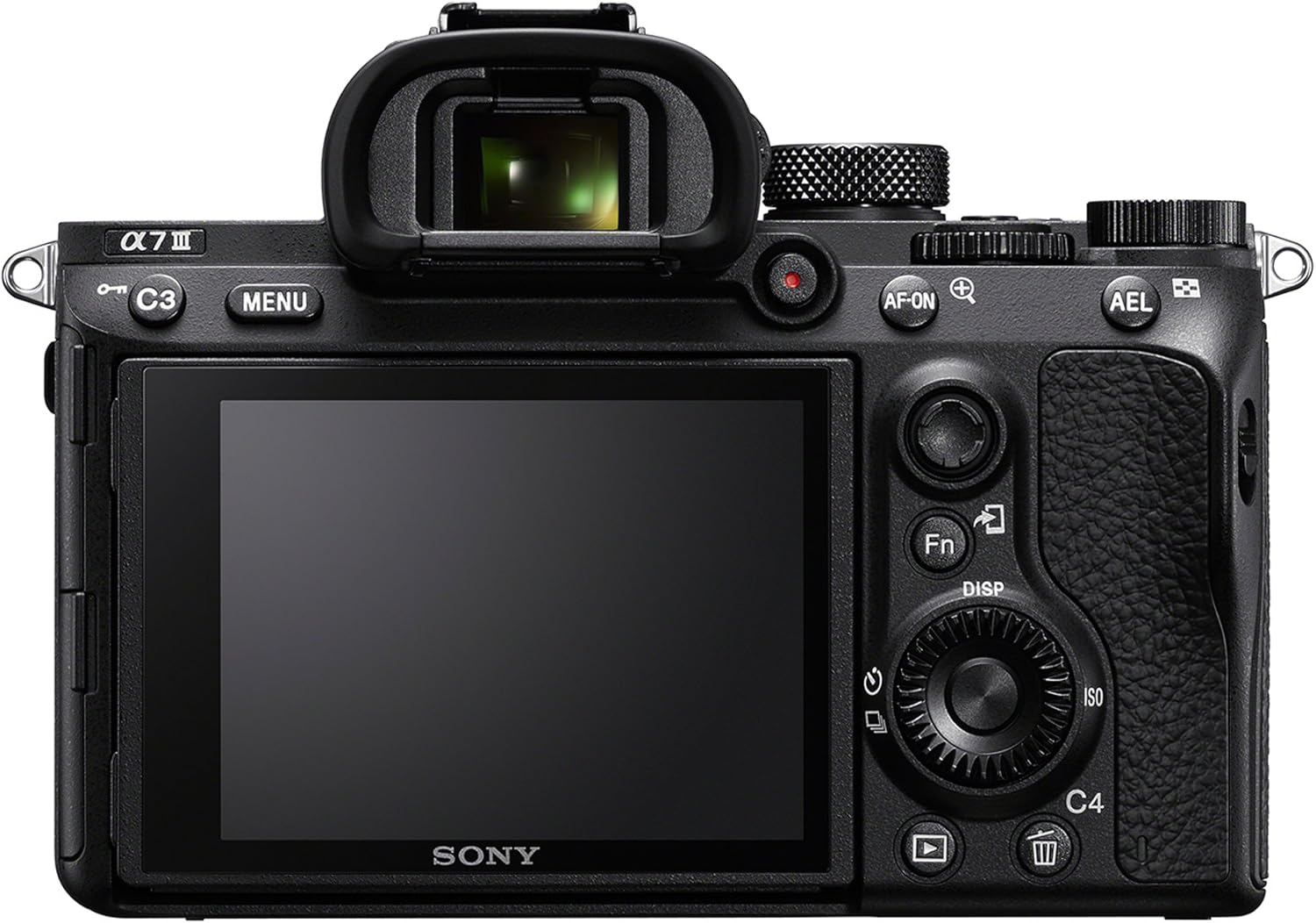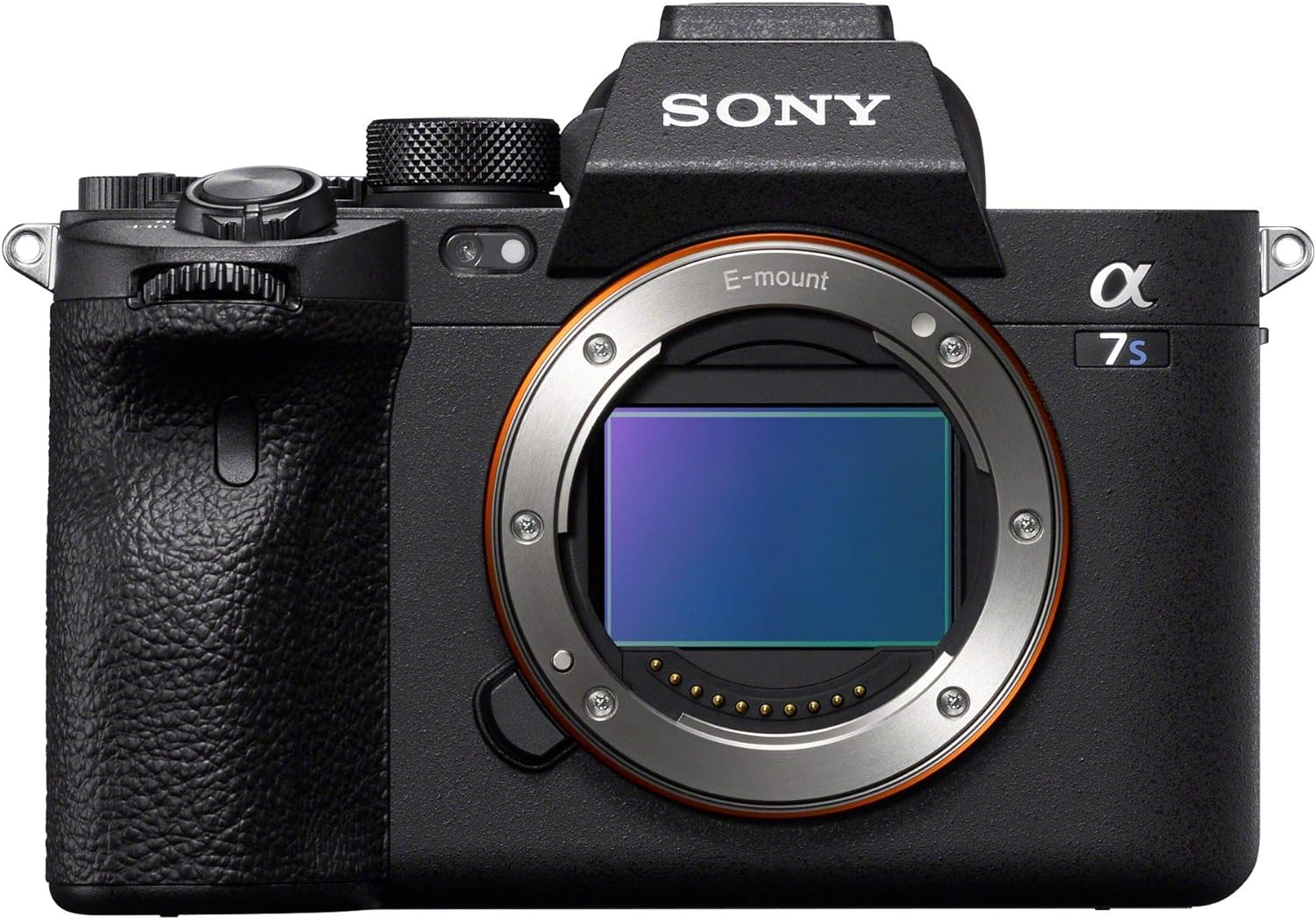
The Best Mirrorless Camera 2021
May 9th, 2021
The best mirrorless camera 2021: 12 models for every budget
Are you looking for the best mirrorless camera at the moment? Then this buying guide is for you. We’ve thoroughly tested all the best mirrorless models on the market, so we know how these compare to each other and which one is best in its class.
Indeed, mirrorless cameras are often smaller than digital SLRs and offer modern shooting amenities such as versatile features and the latest technologies. The best models often capture the best images in their class as well as first-class video, in addition to which they have comprehensive connectivity options and fast continuous shooting. While these are by no means available for free, luckily you don’t have to immerse tons in the best mirrorless cameras.
We have seen several interesting new models this year. Full-screen Canon EOS R5 premium camera with 8K / 30p video, built-in image stabilization and Dual Pixel autofocus. Similar top models are the Canon EOS R6 and Sony A7S III, both of which have excellent features. However, while mirrorless technology is evolving rapidly, older models such as the Fujifilm X-T30 are still excellent options with discounted prices.
We have thoroughly tested the latest models on the market and therefore update this buying guide regularly. Currently, the best mirrorless camera is the Fujifilm X-T4. It’s not a full-screen camera, but it’s by far the best APS-C camera and a great alternative for light and video shooting.
However, it may not be the best mirrorless camera just for you. That’s why we’ve put together a wide range of different ranges in this guide to suit both different shooting needs and budgets. Whether you are a beginner, an experienced blogger or a professional in photography, this list is sure to find the right mirrorless camera for you.
Choose the best camera for you
The supply of cameras has shrunk in recent years - fewer new models are coming, and few new products will remain on store shelves longer before a new version is launched.
One would think that the choice would thus be even easier, but the declining number of models has led to a situation where only a few camera types dominate the whole market. The features are similar in many, even if the manufacturer is different.
Image quality, which is the most important criterion for most buyers when choosing a new camera, is better than good in almost all cameras sold today. This is especially true for SLRs, both mirrorless and mirrorless, which, regardless of the manufacturer, offer such good image quality that a highly trained eye is required to notice qualitative differences.
Thus, other features of the cameras play a more important role. How well does autofocus work? Can the camera maintain a high shutter speed for two seconds or two minutes? Is the device resistant to water and dust? Is a bright telephoto lens available for the camera? Does the video work well? And so on.
The easiest way is to read the tests and find out if there is a camera that is best suited for your own use. A photographer who crawls among the undergrowth to capture immortal moments of nature needs quite different qualities than parents who want to photograph their offspring.
The best camera depends very much on your own needs. Many needs can be met with a cell phone camera, but they still have their limitations that make many end up buying a decent camera. The right camera still offers better image quality and more options.
Before we get to the best cameras of the year, let’s go through a few more basic things about choosing the right device.
The best mirrorless cameras in a nutshell
1. Fujifilm X-T4
2. Canon EOS R6
3. Nikon Z6 II
4. Sony A7 III
5. Nikon Z50
6. Sony A7S III
7. Nikon Z7 II
8. Fujifilm X-T30
9. Canon EOS R5
10. Panasonic Lumix S5
11. Canon EOS RP
12. Panasonic Lumix G9
1. Fujifilm X-T4 Mirrorless Camera Body - Black
Are you looking for a mirrorless camera that delivers photos that look as good as 4K video? Only a few cameras achieve the same as the Fujifilm X-T4, which is the best APS-C cell camera at the moment. It is high quality, comfortable to use and has best picture quality in its class. We already loved the Fujifilm X-T3, which is still a great camera for photography, but the X-T4 takes the series to a whole new level. This is thanks primarily to the built-in Image Stabilizer (IBIS), the new battery and the new quieter shutter. Although we would have liked a better grip and an IBIS similar to Olympus, it is still a big help in light and video photography. Thus, the X-T4 is the best option at the moment and has a wide range of high quality lenses.
- • Cell: APS-C
- • Resolution: 26.1
- • Display: 3.0-inch flexible touch screen, 1,620k dots
- • Focus: 425-point AFContinuous shooting: 15 fps (30 fps with electronic viewfinder)
- • Video: 4K @ 60pUser
- • level: Intermediate / professional


2. Canon EOS R6
While the Canon EOS R5 is an exaggerated choice for most, it’s still one of the cheapest full-screen options, which is also one of the best cameras currently available to buy. If you already own Canon’s previous mirrorless full-cell model, this is a worthwhile upgrade for the better. The EOS R6 has best-in-class focus, excellent image stabilization and comic speed, making it suitable for animal and sports photography. While the camera is capable of capturing 4K / 60fps video, the EOS R6 lacks DCI 4K-like features and has overheating limitations that make it a better alternative to just photography. For them, it’s an excellent, albeit expensive, alternative with the convincing focus, usability, and features that make the EOS R6 one of the best cameras on the market right now.
- • Cell: Full cell
- • Resolution: 20.1
- • Display: 3.0-inch folding touch screen, 1,620k dots
- • Autofocus: 6,072-point AF
- • Continuous shooting: 12 fps, 20 fps (with electronic viewfinder)
- • Video: 4K @ 60pUser
- • level: Professional level


3. Nikon Z6 II
For a long time, the Nikon Z6 was number one on this list. Its successor, the Z6 II, is a great option if you want to jump from the company’s SLRs to mirrorless models. Otherwise, the moderate upgrade has dropped the Z6 II a notch alongside competing models. It’s still an extremely great camera, with another EXPEED 6 processor bringing in a new 14-shot burst. In addition, autofocus is even more accurate, and the XQD / CFexpress memory card slot gets the long-awaited UHS-II SD card slot. Video recording is slightly weaker than its competitors, as 4K / 60p mode will not be introduced until February 2021. But a high-quality 24-megapixel full-frame BSI CMOS sensor, high-quality ISO sensitivity and the best usability of mirrorless cameras make this a top choice for professional photographers.
- • Cell: Full cell
- • Resolution: 24.5 MP
- • Display: 3.2 - inch flexible touch screen, 2,100k dots Focus: 273-point hybrid AF
- • Continuous shooting: 14 fps
- • Video: 4K @ 30p
- • User level: Intermediate / professional


4. Sony A7 III
It's easy to fall in love with the Sony A7 III. Already the first A7 model in the series and the successor A7 II showed that Sony's camera technology is going in the right direction. At the latest, this newest addition to the collection really managed to stand out in the market for mid-range mirrorless cameras. The camera's core is powerful enough for even faster-paced shooting: the body includes a 24.2-megapixel full-frame, 4K video recording, internal image stabilization, 10-frame burst speed and a 693-point autofocus system. The dual memory card slot and 710-frame battery life complete the first-class package in terms of value for money and performance. There is still room for improvement in the viewfinder and weather protection, but despite its small shortcomings, the Sony A7 III is definitely one of the most versatile cameras of the moment.
- • Cell: Full size
- • cell Resolution: 24.2 MP
- • Display: 3.0-inch swivel touch screen, 921,000 dots
- • Autofocus: 693-point autofocus
- • Continuous shooting speed: 10 fps Video: 4K
- • User level: Intermediate / professional


5. Nikon Z50
Looking for a smaller and cheaper version of the full-screen Nikon Z6 for travel and overview? The Nikon Z50 sits perfectly in the task and offers an excellent transition to Nikon’s mid-range APS-C cameras. The camera is especially suitable for those who want to replace the digital SLR camera with a mirrorless body. Unlike the smallest competitors, such as the Fujifilm X-T30, the Nikon Z50 is focused on handling, which can be seen, for example, in the sturdy handle. The Z50 produces excellent photos. The camera has the same high-quality autofocus system as the Nikon Z6, which is especially helpful when shooting static subjects. However, in sports and action shooting, the autofocus system is not quite up to the level of the Sony A6400. The impressive electronic viewfinder and swivel touch screen make the Z50 a notable body for travel and overview. The camera gets even more versatile when you get an adapter for Nikon's older F-mount lenses - making the lens range much wider than the new Z lenses.
- • Camera Type: Mirrorless Cell: APS-C
- • Resolution: 20.9 MP
- • Lens: Z-mount
- • Display: 3.2-inch swivel touch screen, 1,036,080 dots
- • Viewfinder: Electronic Continuous shooting speed: 11 fps
- • Video: 4K
- • User level: Enthusiast


6. Sony A7S III
For a long time, it looked like the Sony A7S III would never arrive, but our expectations were rewarded. If you are looking for a full-cell hybrid camera specifically designed for video use, this model is your best option. Actually, the only reason the A7S III is not on a higher ranking is its high price. If price is not an obstacle and you want a small 4K camera that is extremely capable in low light shooting situations, you will not be disappointed. The video quality is excellent and the camera can record for long periods of time. Unlike the limited video recording on the Canon EOS R5, we didn’t come across any overheating warnings here, even though we were shooting over 30 minutes into the tube. The A7S III is a professional-grade camera with professional-grade video capabilities: it can shoot 16-bit raw via HDMI, has excellent focus, a 9.44 MP viewfinder and built-in image stabilization that makes handheld shooting smooth. Of course, it also has a headphone jack and a 3.5 mm microphone jack, as well as the option for XLR audio and four audio inputs via the XLR-K3M. If you don’t miss high-resolution photos, it’s also a viable option for photography. This is undoubtedly a costly option, but otherwise the Sony A7S III is the best camera in its class and takes mirrorless video functionality to a whole new level.
- • Type: Mirrorless
- • Cell: Full cell Resolution: 12.1 MP Lens mount: Sony E
- • Viewfinder: 9.44 MP EVF
- • Display: 1.44m dot touch screen
- • Continuous shooting mode: 10 fps Video: 4K @ 120 images / s
- • User level: Intermediate / professional


7. Nikon Z7 II
While the Nikon Z7 II is a fairly moderate upgrade from its predecessor, the company, on the other hand, hasn’t had to over-upgrade its already excellent mirrorless full-camera. Lessons have been learned from previous critiques by adding another memory card slot and improving the processor, which has provided a hefty increase in camera performance, thanks to 4K / 60p video shooting, ten-frame continuous shooting and an even faster-clear buffer. In addition, the Nikon Z system has grown rapidly, so more and more lenses and accessories are available. Unfortunately, the camera framework for shooting a moving subject is not the best to get, but otherwise Nikon lovers will have an excellent acquaintance here.
- • Cell: Full cell
- • Resolution: 45.7 MP
- • Display: 3.2-inch tilting touch screen, 1020k dots
- • Focus: 493-point AF
- • Continuous shooting: 10 fps
- • Video: 4K @ 60p
- • User level: Intermediate / professional


8. Fujifilm X-T30
Despite its age, the Fujifilm X-T30 is a small and powerful mirrorless camera. While the big sister X-T4 is at the top of this list, the older model has a more compact size and still high-quality performance for photographers looking for a model suitable for travel use. The model, released in 2019, has also dropped in price due to its age, but it’s still hard to find just about any major flaws. It has the same stunning 26.1 megapixel APS-C sensor and processor as the X-T3, making it a great camera for both nature and sports photography. When you add excellent autofocus and a wide range of Film Simulation shooting modes to your equation, you have a fantastic and charming camera on hand.
- • Cell: APS-C
- • Resolution: 26.1 MP
- • Display: 3.0-inch swivel touch screen, 1,040,000 dots
- • Autofocus: 425-point autofocusContinuous
- • shooting speed: 8 fps
- • Video: 4K
- • User level: Medium


9. Canon EOS R5
Canon has not spared the EOS R5. It is a feather-light and durable camera with the company’s best components designed for mirrorless models. It has a high resolution, full cell, and powerful Digic X processor, which are phenomenal tools for photographers. The new generation Dual Pixel autofocus is the best in its class and offers convincingly accurate subject detection and tracking. The quality of the images is also great and they don’t lose their detail even in twilight shooting. Noise is low even at ISO 4000. With the addition of a series of 20 shots, there is a professional-grade alternative for studio and outdoor photography. Although the camera battery is not the same as SLR cameras, it has enough power for four hours. Video recording is also convincing on paper, thanks to 8K / 30fps and 4K / 120fps shooting. Unfortunately, thermal limitations limit shooting times, in addition to which cooling times are also long. In addition, expensive CFexpress memory cards are required to redeem performance.
- • Cell: Full cell
- • Resolution: 45 MP
- • Display: 3.15-inch folding touch screen, 2,100k dots
- • Focus: 5,940-point Dual Pixel AF
- • Continuous shooting: 20 fps
- • Video: 8K @ 30p
- • User level: Medium


10. Panasonic Lumix S5
The Panasonic S5 is a great full-screen option for anyone who wants a high-quality camera for video recording and reasonably qualified photography capabilities. Although it is a hybrid camera, the S5 is primarily designed for video shooting, where it reaches for uncut 4K / 30p shooting, supports Dual Native ISO and V-Log. It also has a foldable screen for image capture and a built-in image stabilizer. The average 7-frame burst speed excludes this sports and nature shooting, but the 6K shooting mode slightly enhances the possibilities with 18 megapixel images. Autofocus is also the company's best imprint, although it stays in the footsteps of Sony and Canon models, among others.
- • Cell: Full cell
- • Resolution: 24.2 MP
- • viewfinder: 2.36 million points
- • Display: 3.0-inch folding display, 1.84 mill. points
- • Continuous shooting : 7 fps, 30 fps (6K shooting mode, 18 MP)
- • Video: 4K / 60p 10-bit 4: 2: 0
- • User level: Intermediate / professional


11. Canon EOS RP
Canon’s first full-frame mirrorless camera, the EOS R , delighted some photographers but disappointed others again. With the EOS RP, Canon manages much more positively than its uneven predecessor. In terms of technical features, the EOS RP mainly corresponds to the junior model. The smaller and lighter body and clearly cheaper price make it a more attractive option for those who want to switch to a mirrorless camera but are not ready to stretch their budget to a more affordable EOS R. There is also no need to make big trade-offs in terms of resolution, as the difference between EOS RP and EOS R is only four megapixels. The EOS RP's highly responsive touch screen, fast autofocus and deep buffer make the camera a great partner for all kinds of shooting situations. Hopefully, Canon will further expand its lens range with smaller and cheaper options, as there are no ideal pairs for this body in the current table setting. Fortunately, the adapter also allows Canon EF lenses to be attached to the body.
- • Cell: Full cell CMOS
- • Resolution: 26.2 MP
- • Focusing mode: 5,655-point autofocus
- • Display: 3-inch swivel touch screen, 1,040,000 dots
- • Continuous shooting speed: 5 fps
- • Video: 4K
- • User level: Enthusiast


12. Panasonic Lumix G9
While the Panasonic Lumix G9 is unmatched by the Lumix GH5 in terms of video, its photographs make the camera a viable option. Like the Olympus OM-D E-M1X listed above, this camera’s smaller MFT sensor has managed to pack full of brilliant features. The camera combines eight photos into one photo, up to 80 megapixels. Thanks to great image stabilization, photos are super-sharp even when shooting by hand. With the addition of continuous shooting at 60 frames per second, a sophisticated design and a comprehensive set of advanced features, it’s no exaggeration to call the Lumix G9 a great and versatile mirrorless camera.
- • Kenno: Four Thirds Live MOS
- • Resolution: 20.4 MP
- • Autofocus: 225-point autofocus
- • Display: 3-inch swivel touch screen, 1,040,000 dots
- • Continuous shooting speed: 20 fps
- • Video: 4K, 60 fps
- • User level: Enthusiast


Check these things before buying a new camera
When you buy a new camera, you need to figure out many features and functions. We made a list of the most important things to consider. Feel free to first take a look at camera tests and product reviews, for example in the Digital Image Tool Guide , you will see what experienced professionals have said about the models that interest you.People’s camera needs are different, but there are a few basic things to at least pay attention to when considering stores.
1. Image sensor size
The size of the image sensor is the single technical factor that most affects image quality.The image sensor captures light, as the film did on analog cameras in decades ago.The cells of cheaper compact cameras and smartphones are smaller than the claw of a little dragonfly, while the cells of full-size cameras are the size of a large stamp, so it can collect much more light and image information.
2. Number of focus points
Some cameras have thousands of focus points, but whether they are 50 or 5,000 is not as essential as one might think in light of the numbers. The important thing is that they are evenly distributed over the image area so that the camera can focus even if the subject is at the edge or at an angle. Focus points usually fill a larger portion of the image area when shooting through the screen than when shooting through the optical viewfindr. Focusing is faster when shooting through the viewfinder.
3. Burst speed
Continuous shooting speed refers to how many frames per second the camera can take.For landscape and building photographers and portraits, this is not particularly important, but for sports and bird photographers, for example, it is a good thing if the burst speed is at least ten frames per second.
4. Battery life
The better the battery life, the better - then the risk of losing a good shooting situation in the event of a power outage is reduced. In practice, however, one charge gets more dry than promised in the operating instructions.The operating instructions usually describe a shooting method in which the camera is turned off and on often, and e.g. flash. Video recording, of course, consumes battery power briskly.If the indicated number of shots on a single charge is less than 400, we recommend purchasing a spare battery if there is a lot to shoot in one shooting trip.
5. ISO sensitivity
At high ISO values, you can shoot in low light without shaking the images and showing too much movement. As the ISO sensitivity is increased, the image signal from the cell is amplified, and at the same time the image noise is increased.Some cameras have the option of using six- or seven-digit ISO values, although this may not tell you much about how good or better bad results are obtained at the highest ISO sensitivities.However, a high maximum value can be an indication that medium values such as ISO 25 600 or 51 200 still produce quite valid images.We do not usually exceed ISO 12,800 to ensure that the image quality is always good enough.
6. Display
Today, the size of a liquid crystal display (LCD) is usually 3 to 3.2 inches. Screen accuracy is at least as important. It should preferably have at least a million dots so that the image it reproduces does not pixelate.It’s also at least a good thing if the screen turns in different directions. This makes it much easier to shoot, for example, overhead or on the ground.
7. Ergonomics
You should try the camera at a store, if at all possible. Only then do you feel how it feels in your hands - even when you have a lens attached to it.At the same time, check how conveniently the main controls and buttons are positioned.
8. Resolution
Camera resolution was still a hot topic of discussion a few years ago, but today most cameras have a resolution of at least 12 megapixels, images are always repeated in detail unless printed on paper and enlarged to poster size.The 4K screen is equivalent to 8.3 megapixels, and the 17 megapixel image can already be magnified into a high-quality A3 poster without any worries. The high resolution also allows for severe cropping and partial enlargements.
9. Camera system
When purchasing a SLR camera, you should consider the composition of the included accessories such as a lens, flash unit, etc. - in relation to what you already have.Some systems include, for example, special lenses.It may also be that your old lenses are accessing your new camera through an adapter.
10. Weather protection
You should also consider whether you want a weatherproof model with joints that are all sealed so that water and dust cannot get in.Most cameras can withstand a small cloud of dust and morning fog, but if you want to shoot in heavy rain or at the seaside, you should get a fully weatherproof camera.Digital image number 10/2019 contains a large camera guide that brings together all the SLR cameras on the market.
11. The smart light tent guarantees perfect light and sharp images
With the digital photo tent, you get a nice little home studio that is also easy to take with you anywhere.The new light tent makes it easier than ever to photograph macro objects such as flowers and insects or food and goods that are to be sold over the internet.The uniform background of the light tent gives your images a professional look, and its LED lamps illuminate the images perfectly without shadows or reflections.
All Products